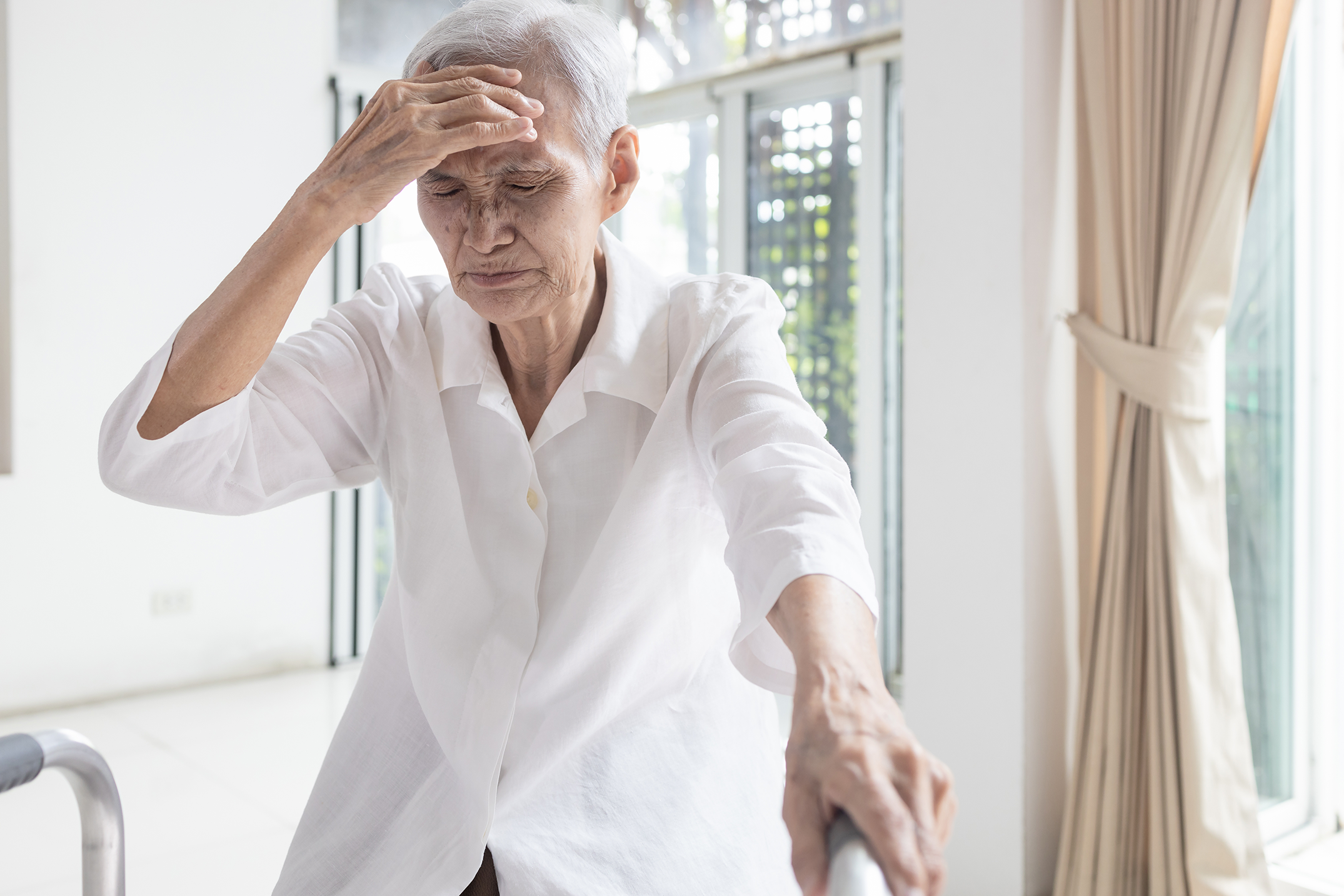Although anaemia may not seem like a chronic condition, it has the potential to cause serious health issues for elderly patients. Here’s what you need to look for and how to treat it.

A number of things can cause anaemia in seniors, such as chronic disease, iron deficiency, vitamin B12 deficiency and bleeding. And while this may not seem like a serious health issue, studies have found that anaemic seniors are more likely to lose physical abilities, experience functional decline, be hospitalised and be admitted to nursing homes compared to seniors without the condition.
Even borderline anaemia can contribute to these health outcomes; therefore, it is important for caregivers to be aware of the signs and symptoms to ensure it is detected and treated in a timely manner.

What is anaemia?
When someone is anaemic, the number of red cells in their blood or the amount of haemoglobin in these cells is lower than it should be. Anaemia can occur due to a loss of blood, insufficient or faulty production of red blood cells (RBCs), or the destruction of these cells. This condition is diagnosed by measuring the amount of each through a simple blood test.
Haemoglobin is a protein in RBCs that carries oxygen to all the tissues in the body, making it an essential component of health and life. If the haemoglobin level is below 12 grams per decilitre of blood in a woman, or 13.5 grams per decilitre in a man, that person may be said to be anaemic.
Signs of anaemia
When older people notice that they are tired or a little weaker than they used to be, they often attribute it to general ageing. While the assumption may have some truth to it, common symptoms of “old age,” such as fatigue, weakness, dizziness, irritability, pale skin and shortness of breath, often point to more serious (and treatable) illnesses. These signs should always indicate that a loved one needs to be evaluated by a healthcare provider.


Causes of anaemia
Anaemia can either be acute, with a sudden and severe onset, or it can be chronic, developing slowly over a long period of time. The difference in onset can shed light on the cause of the anaemia, and also helps to determine which course of treatment will be most effective.
According to the Haematology Society of Australia & New Zealand (HSANZ), approximately 16 per cent of Australians over age 75 are anaemic. The two most common causes are chronic diseases (such as ulcers, liver or kidney disease, hypothyroidism, inflammation of the stomach or intestines, and cancer) and iron deficiency. Deficiencies in vitamin B12 or folate are not as common.
Certain medications can also contribute to anaemia. This is especially true for older individuals who typically take multiple prescriptions. Numerous medications can have a synergistic effect and cause side effects to have a greater impact on the body. Cancer treatments like radiation and chemotherapy can also damage bone marrow, where red blood cells are created.
Iron deficiency anaemia
While they are less common causes of anaemia in the elderly, iron deficiency, vitamin B12 deficiency and folate deficiency can be easily identified and treated. Addressing nutritional issues can make an enormous difference in the way a senior feels and functions and may prevent the loss of physical abilities that could result in hospitalisation or placement in a nursing home. Simple blood tests are used to diagnose these deficiencies and then dietary supplements are typically prescribed.
Low iron is the most well-known cause of anaemia, but it typically affects younger individuals. When it occurs in seniors, it is usually due to limited iron absorption in the intestines or gastrointestinal bleeding. If an older person with iron deficiency anaemia is prescribed iron supplements, it is crucial to follow the healthcare provider’s instructions regarding supplementation – too much iron intake can cause vomiting, diarrhea, headache, irritability, fatigue, and even heart and joint damage. Even in proper doses, iron supplements can still cause constipation, nausea, diarrhea and stomach pain.
Seniors sometimes lose the ability to absorb vitamin B12 from their food. Deficiencies of vitamin B12 may be treated with oral supplements, but injections are usually the most effective treatment. To increase the amount of this vitamin in the diet, seniors should eat beef, poultry, fish, liver, oysters, clams, milk, cheese and eggs. Folate deficiencies can be helped with a diet that includes plenty of raw or lightly cooked green, leafy vegetables, cruciferous vegetables (broccoli, Brussels sprouts and cauliflower), fresh fruits, dairy products and whole grains. A healthcare provider might prescribe a folic acid supplement, which is a form of folate.

Treatments for anaemia caused by chronic diseases
When anaemia is caused by a chronic disease, naturally, the best thing to do is treat the underlying condition. This is also known as “anaemia of chronic disease” or ACD. Patients with ACD often have adequate iron and nutrients in the body, but they are not being used efficiently in the formation of new red blood cells. Although the reason for this impaired ability to use iron is not known, some experts believe it to be a part of the body’s immune response to prevent bacterial growth and further harm – this is part of why iron supplementation is not an effective treatment for ACD.
Infections, inflammation, hormonal imbalances and malignancy are a few main causes of ACD. Other conditions can also be culprits. Chronic kidney disease is one specific example, and there are helpful drugs available that stimulate the bone marrow to produce more red blood cells. Specific methods of treatment depend entirely on the individual’s overall health and comorbid conditions.
There are other forms of anaemia that are less common and require serious medical intervention. Treatment might include steroids, blood transfusions, or even surgery to remove an enlarged spleen or repair abnormal blood vessels, tumours, or heart valves.
The key to dealing with anaemia is always to discover the root cause, when possible, and then to work with a healthcare provider to treat both the cause and the symptoms.
Author: Carol Bradley Bursack, author, columnist, consultant and speaker









